Opinions & Interviews
Belarus prime minister pushes for more cutting-edge projects in innovative development program
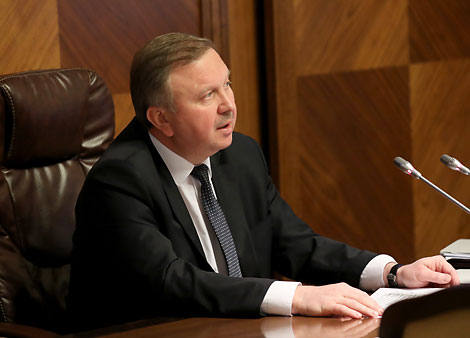
MINSK, 23 January (BelTA) – The share of innovative projects of the fifth and sixth technological phases must be at least as high as 75% of the total number of projects specified by the government program on innovative development in 2016-2020. Prime Minister of Belarus Andrei Kobyakov made the statement during the session of the Presidium of the Council of Ministers held on 23 January to discuss the program’s implementation, BelTA has learned.
As part of the program 17 customers are busy implementing 86 projects. In 2017 the Industry Ministry worked on 13 projects. The National Academy of Sciences of Belarus took care of ten projects. The agencies with the highest number of projects also included the Belarusian state light industry concern Bellegprom, a number of oblast administrations, and the Minsk city administration.
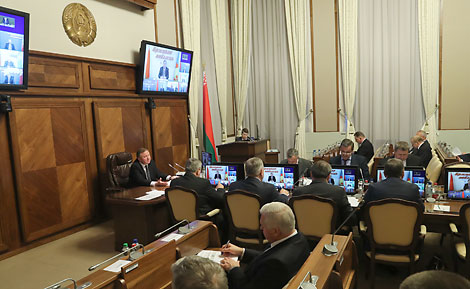 Andrei Kobyakov pointed out that while the number of projects, which are being implemented as part of the program is sufficient, only 34 projects (39.5%) live up to standards of the fifth and sixth technological phases. “In my opinion, the share of such projects must be at least as high as 75%. It seems to me that central government agencies are doing a poor job, looking for and implementing breakthrough innovative projects,” believes the Belarusian head of government.
Andrei Kobyakov pointed out that while the number of projects, which are being implemented as part of the program is sufficient, only 34 projects (39.5%) live up to standards of the fifth and sixth technological phases. “In my opinion, the share of such projects must be at least as high as 75%. It seems to me that central government agencies are doing a poor job, looking for and implementing breakthrough innovative projects,” believes the Belarusian head of government.
In 2017 facilities were commissioned as part of 19 projects. The number includes car assembly by the Belarusian-Chinese joint venture BelGee, the development of the R&D branch Belmikrosistemy of the Belarusian microelectronics company OAO Integral, the small-scale production of composite materials based on Belarusian thermoplastics for extrusion-type 3D printing.
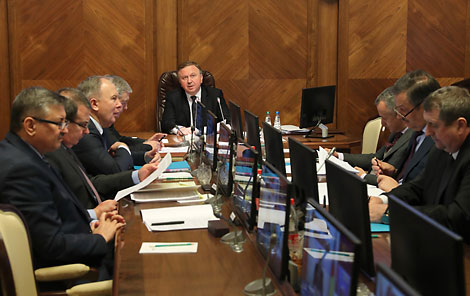 Andrei Kobyakov noted the poor performance of some customers, which did not allow launching 6 projects of the state program within the prescribed time limits. “I expect to hear a detailed report from the head of the State Science and Technology Committee on the reasons why individual customers failed to meet the deadlines established in the state program and on the specific measures undertaken to prevent similar situations in the future. Failure to comply with deadlines leads to the adjustment of the program in part of the rescheduling and funding volumes, which affects the effectiveness of the program as a whole,” the prime minister said.
Andrei Kobyakov noted the poor performance of some customers, which did not allow launching 6 projects of the state program within the prescribed time limits. “I expect to hear a detailed report from the head of the State Science and Technology Committee on the reasons why individual customers failed to meet the deadlines established in the state program and on the specific measures undertaken to prevent similar situations in the future. Failure to comply with deadlines leads to the adjustment of the program in part of the rescheduling and funding volumes, which affects the effectiveness of the program as a whole,” the prime minister said.
The Presidium of the Council of Ministers convened on 23 January to discuss the issues related to the examination of innovative projects. In 2017 the State Science and Technology Committee received 70 innovative projects for examination. Of them 40 projects received positive opinion, 21 were turned down, and 9 projects are currently under examination.
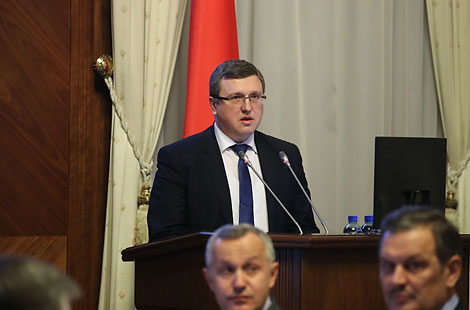 Last year the government adopted resolution No.425 of 5 June to streamline the procedures and improve the quality of state scientific and technical examination. According to the State Science and Technology Committee, in 2017 the committee sent back the project materials for finalization 38 times. Andrei Kobyakov drew attention to the need for the coordinated and constructive interaction between the State Science and Technology Committee and customers in the examination of innovative projects.
Last year the government adopted resolution No.425 of 5 June to streamline the procedures and improve the quality of state scientific and technical examination. According to the State Science and Technology Committee, in 2017 the committee sent back the project materials for finalization 38 times. Andrei Kobyakov drew attention to the need for the coordinated and constructive interaction between the State Science and Technology Committee and customers in the examination of innovative projects.
As for the spending in 2017, 100% of the national centralized innovation fund was spent last year versus 68.5% of the volume of local innovation funds. In this regard, the most problematic regions are Grodno Oblast (33.6% of the money used), Minsk Oblast (26.1%), and Brest Oblast (63.5%). In other regions, this figure varied from 80% to 93%. The Council of Ministers’ Presidium discussed whether the innovation funds are spent in a timely manner and in full at a meeting back in October 2017. According to Andrei Kobyakov, the oblast executive committees and the Minsk city administration have not done enough to use the money to the fullest extent.
In his words, in 2018, provided that all the funds are spent and more cutting-edge projects are available, it will be possible to bring forward an initiative to the president to allocate more money for innovation funds. “Today these allocations make up 10% of the income tax. This number can be increased to 15-20%, depending on how much is needed. Such approaches will help raise additional funds for scientific development,” Andrei Kobyakov added.
The prime minister also said he is ready to consider proposals to strengthen the role of the State Science and Technology Committee in coordinating the search for flagship projects by ministries and regions. The implementation of such projects, he noted, will enable the necessary conditions to increase the competitiveness of Belarus’ economy and its high-technology sectors.


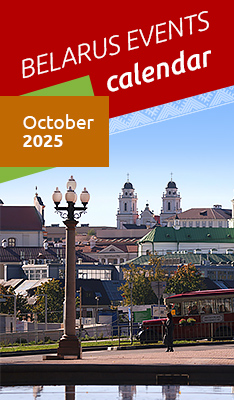




 print version
print version make home page
make home page add to bookmarks
add to bookmarks

